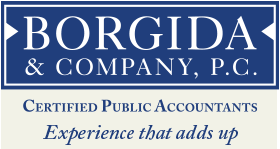Homeowners still have time this year to make energy-saving and green-energy home improvements and qualify for either of two home energy credits.
The Nonbusiness Energy Property Credit is aimed at homeowners installing energy efficient improvements such as insulation, new windows and furnaces. The credit is more limited than in the past years, but can still provide substantial tax savings.
- The 2011 credit rate is 10 percent of the cost of qualified energy efficiency improvements. Energy efficiency improvements include adding insulation, energy-efficient exterior windows and doors and certain roofs. The cost of installing these items does not count.
- The credit can also be claimed for the cost of residential energy property, including labor costs for installation. Residential energy property includes certain high-efficiency heating and air conditioning systems, water heaters and stoves that burn biomass fuel.
- The credit has a lifetime limit of $500, of which only $200 may be used for windows. If the total of nonbusiness energy property credits taken in prior years since 2005 is more than $500, the credit may not be claimed in 2011.
- Qualifying improvements must be placed into service to the taxpayer’s principal residence located in the United States before January 1, 2012.
Homeowners going green should also check out the Residential Energy Efficient Property Credit, designed to spur investment in alternative energy equipment.
- The credit equals 30 percent of what a homeowner spends on qualifying property such as solar electric systems, solar hot water heaters, geothermal heat pumps, wind turbines, and fuel cell property.
- No cap exists on the amount of credit available except for fuel cell property.
- Generally, labor costs are included when figuring this credit.
Not all energy-efficient improvements qualify for these tax credits, so homeowners should check the manufacturer’s tax credit certification statement before they purchase. Taxpayers can normally rely on this certification statement which can usually be found on the manufacturer’s website or with the product packaging.
Eligible homeowners can claim both of these credits on Form 5695, Residential Energy Credits when they file their 2011 federal income tax return. Because these are credits and not deductions, they reduce the amount of tax owed dollar for dollar. An eligible taxpayer can claim these credits regardless of whether he or she itemizes deductions on Schedule A.
ACTION ITEM: Consider purchasing energy efficient improvements prior to the year end.
Photo By Creative Commons



solar panels…
[…]Tax Credits for “Going Green” | Borgida & Company, P.C.[…]…